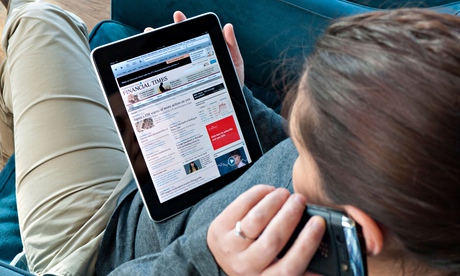
Straws in the wind time: the mighty New York Times, which stakes so much on paywall success, reported profits ($55.7m) in the second quarter down $15m year-on-year, with total revenue ($389m) a couple of million off the 2013 pace, and digital subscriptions only 32,000 up, in spite of a flurry of new app launches. In one sense, 831,000 subscribers is pretty heartening. In another, it won't keep the great grey battleship afloat.
The almost equally mighty Mail Online – 169 million unique browsers around the globe – doesn't do subscriptions like the NYT. It relies on advertising: and that was nearly 50% up in the quarter that ended in June, more than offsetting a droop in print ad cash. Brilliant, superb? Or perhaps just a tad euphoric if you prefer actual money to percentages. Web ads brought in £15m over the quarter, up £5m on 2013. (Maybe they'll just miss a £60m web target by the year's end.) But total revenue was £183m – and print ads still accounted for £46m, more than three times the digital take (while online staffing moved towards 500, no clear running costs provided). So profit, loss, development plans, ultimate success? You pays Lord Rothermere's money and you takes your uncertain choice.
Which thus locates unalloyed success in only one newsroom: at the Financial Times, where digital subs at over £5 or £7 a week on various packages are high enough for realistic reckoning alongside print circulation, so that rolling 455,000 online subscribers and 220,000 print buyers together produces a 13% rise year-on-year (with mobile growth accounting for nearly 50% of total traffic). The FT is in a special place and holds a special position. It shows signs of a real transition from print to digital. Of course one specialist model doesn't fit all. But it's still a neat model to watch – and admire.

